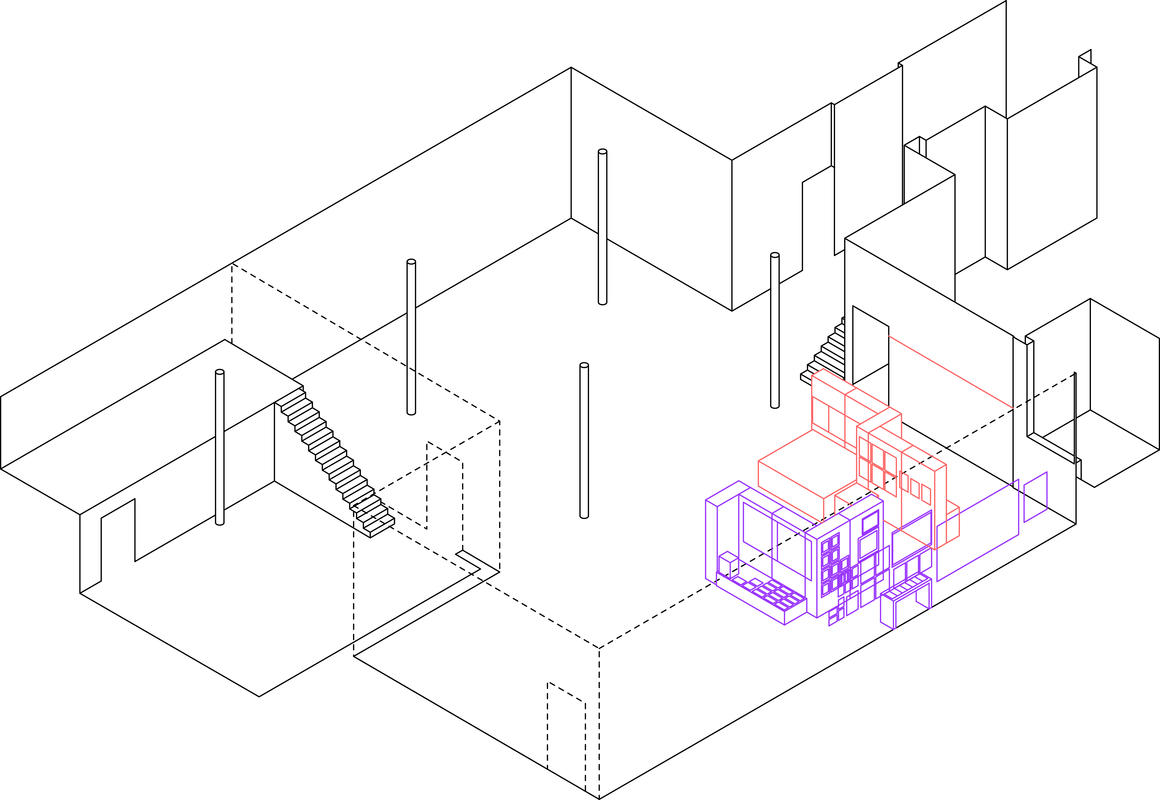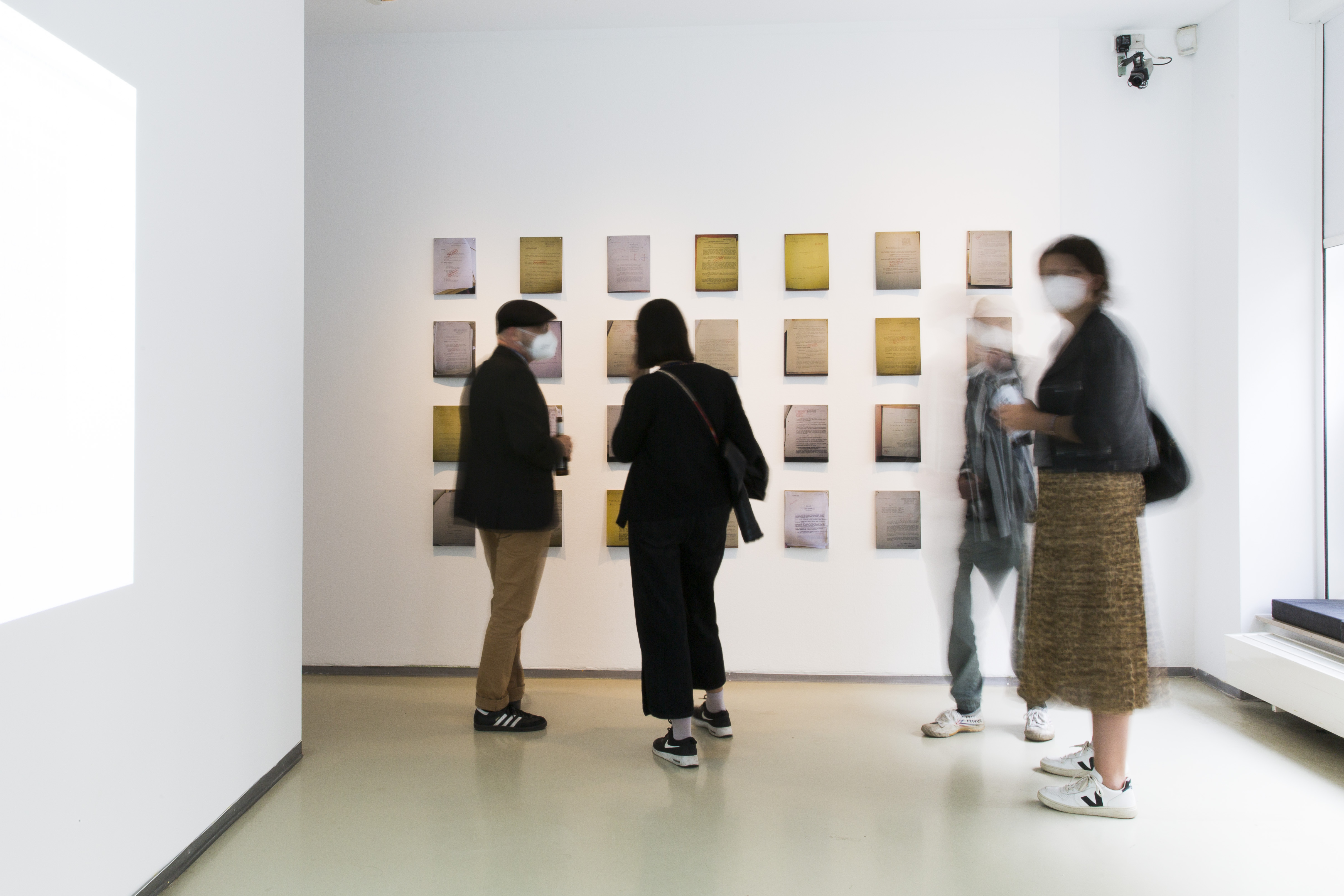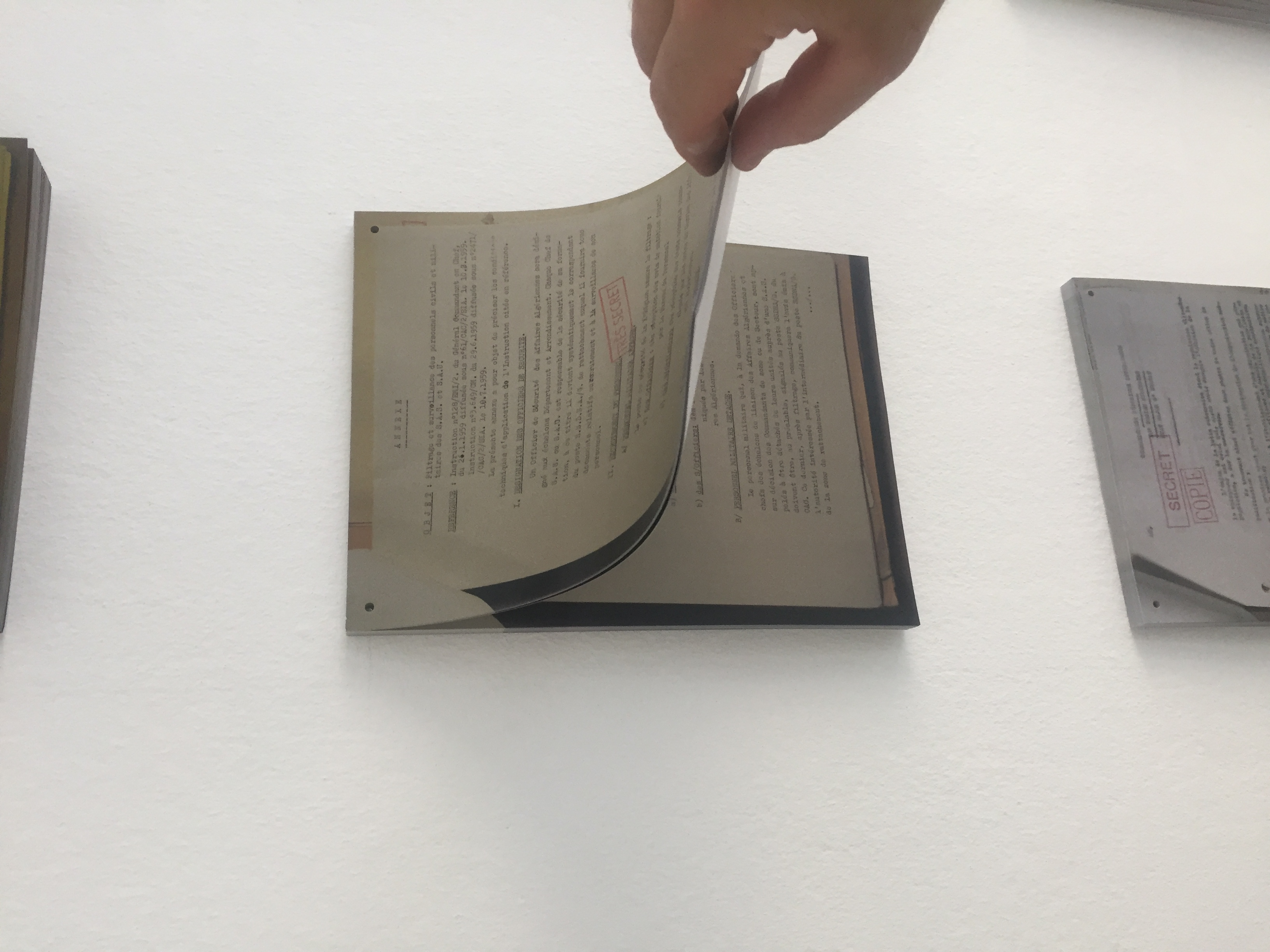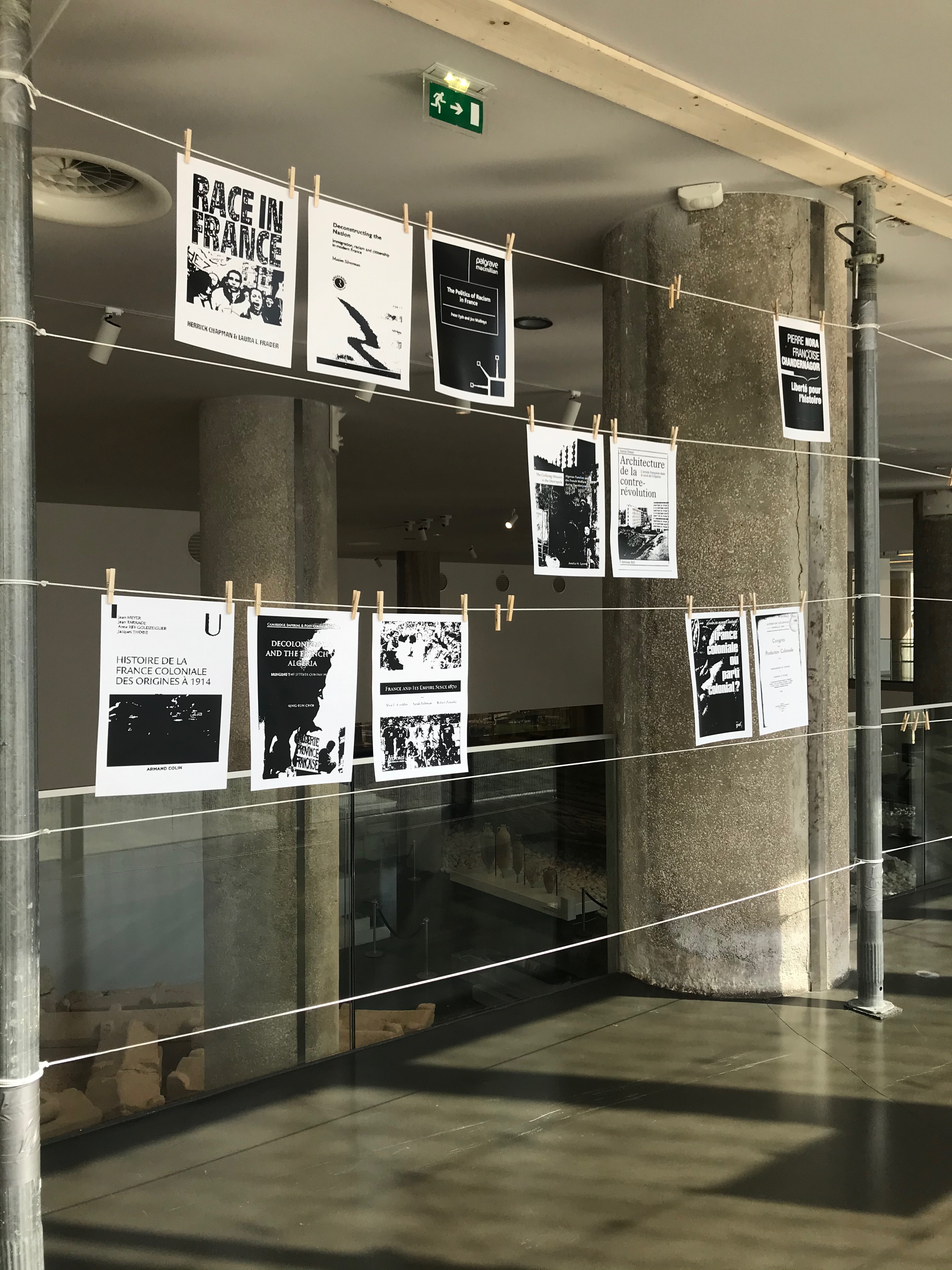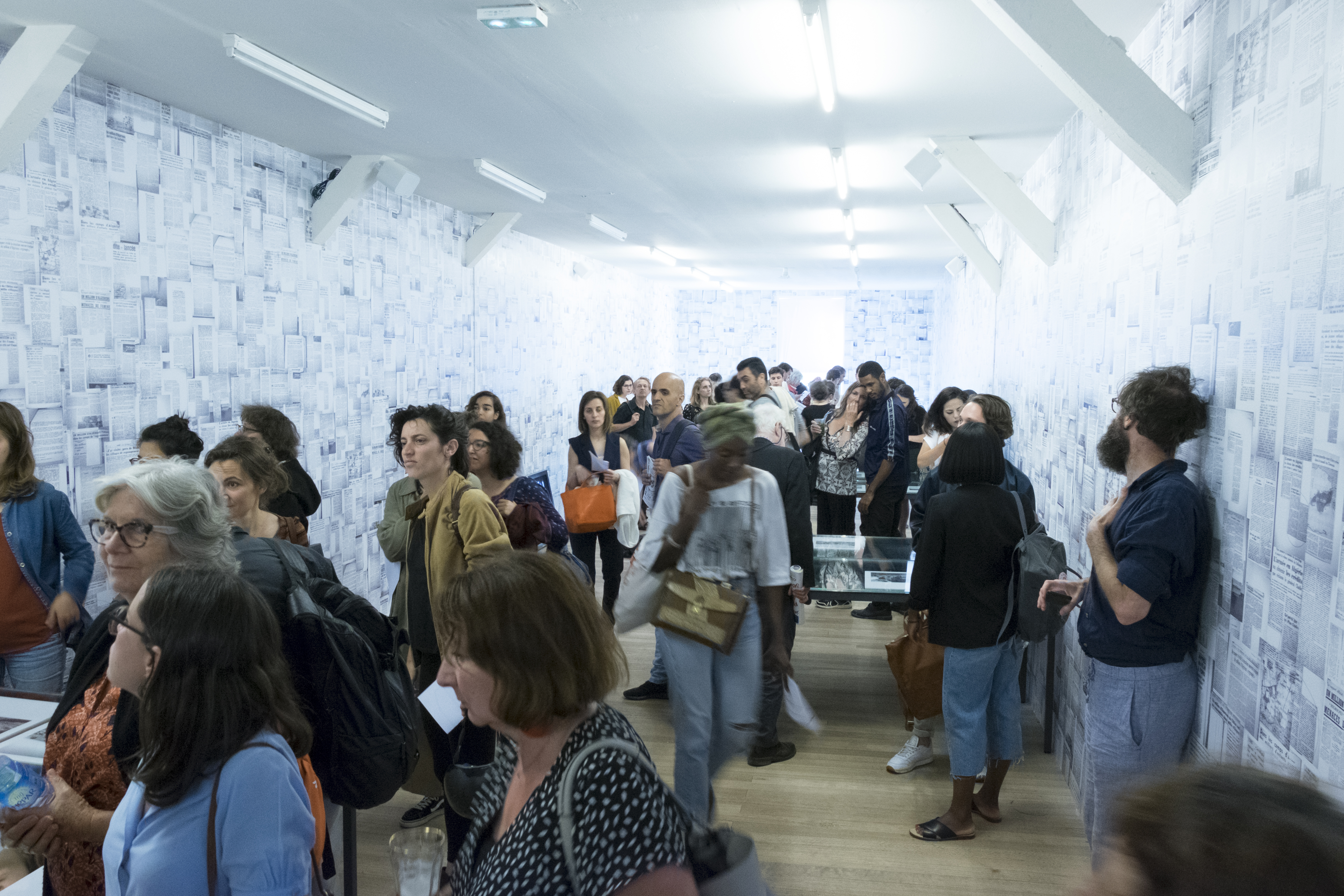





Photos by Maarten Nauw, 2023
Performing Colonial Toxicity
Coproduced by Framer Framed and If I Can't Dance, I Don't Want To Be Part Of Your Revolution
Commissioned by Megan Hoetger, If I Can't Dance, I Don't Want to be Part of Your Revolution
2022-23 Biennial, Edition IX: Bodies and Technologies, Amsterdam
Supported by the Swiss Art Council's Pro Helvetia Foundation
Opening: Saturday, 7 October 2023
8 October 2023 - 14 January 2024
Framer Framed, Amsterdam
Performing Colonial Toxicity at Framer Framed
Between 1960 and 1966, the French colonial regime detonated four atmospheric atomic bombs, thirteen underground nuclear bombs and conducted other nuclear experiments in the Algerian Sahara, whose natural resources were being extracted in the process. This secret nuclear weapons programme occurred during and after the Algerian Revolution, or the Algerian War of Independence (1954-62). The resulting toxification of the Sahara spread radioactive fallout across Algeria, North, Central and West Africa, and the Mediterranean (including Southern Europe), causing irreversible and still ongoing contaminations of living bodies, cells and particles, as well as in the natural and built environments. Because the archives of the French nuclear programme remain closed over fifty years later, historical details and continuing impacts remain largely unknown.
Performing Colonial Toxicity presents available, offered, contraband and leaked materials from these archives in an immersive multimedia installation. It creates with them a series of audio-visual assemblages, which trace the spatial, atmospheric, and geological impacts of France's atomic bombs in the Sahara, as well as its colonial vocabularies, and the (after)lives of its radioactive debris and nuclear waste. Taking on an architectural scale, these 'stations', as Henni refers to them, are meant to be moved through and engaged with. Visitors are invited in to draw their own connections between what is present in the installation, as well as what is absent from it.
The exhibition emerges from a broader research project, which also includes the publication Colonial Toxicity: Rehearsing French Nuclear Architecture and Landscape in the Sahara and an open access digital database entitled The Testimony Translation Project. Experimenting with different methods of spatialising and circulating suppressed information, the project's three-part structure constitutes a powerful call to action to open the still-classified archives and to clean/decontaminate the sites: both crucial steps for exposing the pasts, presents and futures of colonial toxicity.
Including interviews with Larbi Benchiha, Patrice Bouveret, Roland Desbordes, Bruno Hadjih, Gabrielle Hecht, Penelope Harvey, Jill Jarvis, and Roxanne Panchasi. Many thanks to the translator-participants, including: Raoul Audouin, Adel Ben Bella, Omar Berrada, Megan Brown, Severine Chapelle, Simona Dvorak, Hanieh Fatouree, Alessandro Felicioli, Anik Fournier, Jill Jarvis, Augustin Jomier, Timothy Scott Johnson, Anna Jayne Kimmel, Corentin Lecine, Natasha Llorens, Miriam Matthiesen, Martine Neddam, M'hamed Oualdi, Roxanne Panchasi, and Alice Rougeaux.
Many thanks to Patrice Bouveret and the collaborators and partners of the Observatoire des armements, Larbi Benchiha, Bruno Hadjih, Elisabeth Leuvrey, Farid Rezkallah, Frederique Bergholtz, Megan Hoetger, the extended If I Can't Dance team, Framer Framed team, and Swiss Art Council's Pro Helvetia Foundation for their support of the project. Deep thanks also go to the interviewees who have generously accepted to share their expertise and experience, including: Larbi Benchiha, Patrice Bouveret, Roland Desbordes, Bruno Hadjih, Gabrielle Hecht, Penelope Harvey, Jill Jarvis, and Roxanne Panchasi, as well as the translator-participants who have committed their time to translating Henni's selection of testimonies, including: Raoul Audouin, Adel Ben Bella, Omar Berrada, Megan Brown, Severine Chapelle, Simona Dvorak, Hanieh Fatouree, Alessandro Felicioli, Anik Fournier, Jill Jarvis, Augustin Jomier, Timothy Scott Johnson, Anna Jayne Kimmel, Corentin Lecine, Natasha Llorens, Miriam Matthiesen, Martine Neddam, M'hamed Oualdi, Roxanne Panchasi, and Alice Rougeaux. And, finally, much appreciation to Marley Jaeda Barnes, Amina Belghiti, Samuel Fuchs, Floriane Germain, Francois Girard-Meunier, Maxime Groslambert, Pamela Hampton Hunsinger, Megan Gail Mueller, Caroline Ann O'Donnell, Roxanne Panchasi, Georg Rutishauser, Sabine Sarwa, Pascal Schwaighofer, Philip Ursprung, Oliver Wyss, Meejin Yoon, and all those who have over the years contributed to the development of this research and who asked to remain anonymous.
Performing Colonial Toxicity: Testimony Translation Project
In the frame of the research project Performing Colonial Toxicity, investigating the use of the Algerian Sahara as a nuclear firing field by the French state between 1960 and 1966, the architecture-historian has conceived her If I Can't Dance Studio room as a space for the Testimony Translation Project. Here the process begins with digitalising and translating the nearly seven hundred pages of written testimonies from victims of these French nuclear detonation programmes. In the coming four months you can follow the selected documents being activated through a constantly unfolding translation process, engaging participants from around the world.
If I Can't Dance 2022-23 Biennial Commissions
Edition IX - Bodies and Technologies, If I Can't Dance's ninth biennial commissions include artists and researchers by Susanne Altmann, Black Speaks Back, Samia Henni, Nuraini Juliastuti, Jessika Khazrik and Constantina Zavitsanos.



